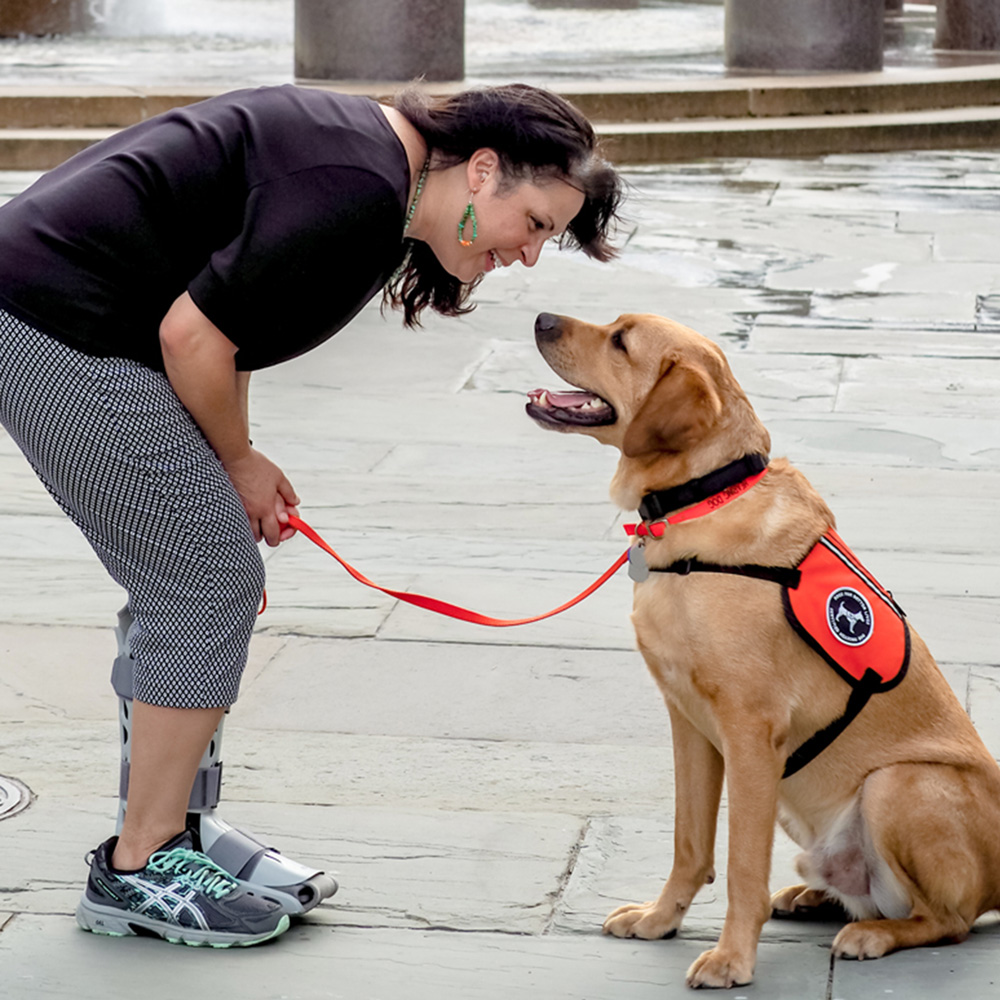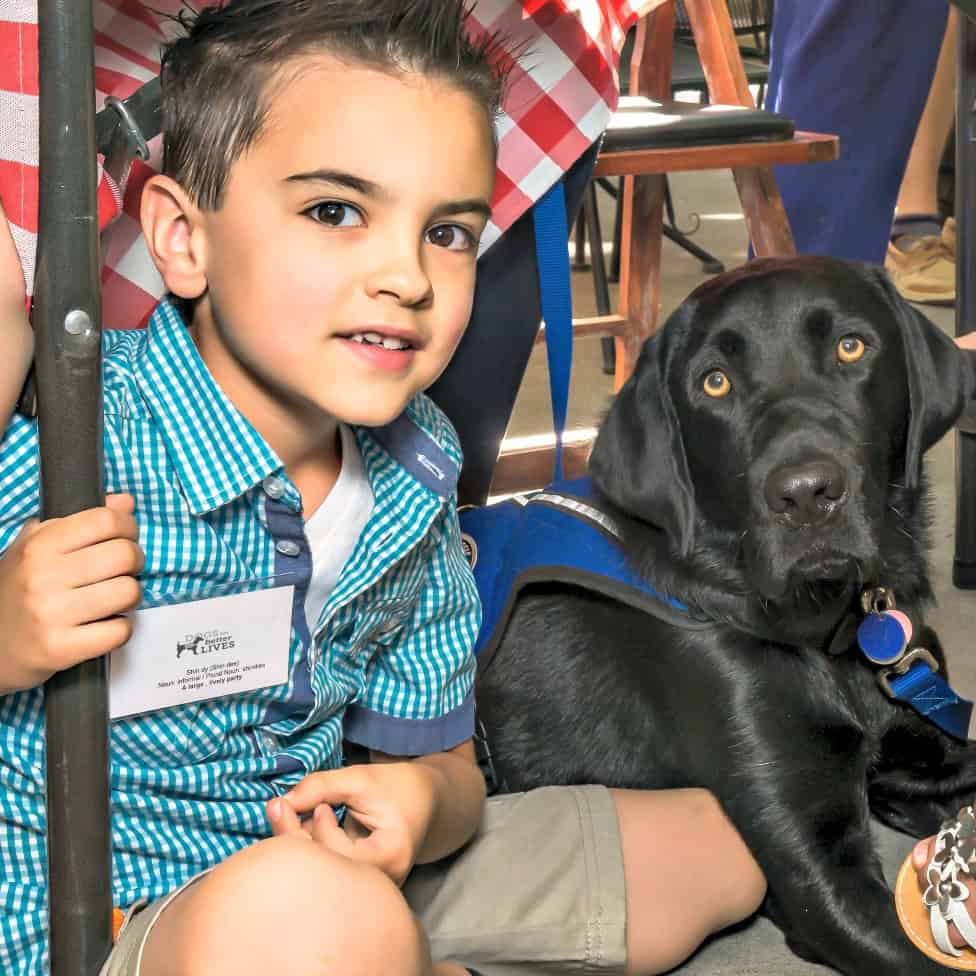It’s National Service Dog Month – a month dedicated to raising awareness about (and celebrating) Service Dogs. Dogs for Better Lives has been training and placing Service Dogs since 1977, so we’ve heard a lot of questions about Service Dogs over the years. Is it ever okay to pet a Service Dog? Why can a Service Dog go into a restaurant? Below we debunk the top five myths about Service Dogs. Have more questions? Join us at one of our National Service Dog Month events this September. Visit our National Service Dog Month page for a full listing of events in Massachusetts, California, Oregon and Washington.
Myth #1: I can deny entry for a Service Dog in my business.
Fact: Under ADA, Service Dogs cannot be denied access to a building, even a food service establishment.
A trained Service Dog should ever cause an inconvenience to a business owner or manager, because Service Dogs are under the control of their person. These dogs are on the job. They’ve learned a variety of important physical skills that set them apart from other dogs.
Myth #2: Any dog can be a Service Dog – they don’t need to be trained.
Fact: Service Dogs train for hundreds of hours before being certified.
For puppies, the training begins at a very young age, working on obedience and socialization in their Puppy Raiser’s home before coming back to our campuses at 14-16 months of age. Once on our campus, Service Dogs in Training spend 4-6 months of obedience, socialization and specialized training with our Certified Trainers.
Myth #3: Service Dogs must be purpose-bred labs.
Fact: Service dogs can be any size or breed!
Dogs can be purpose-bred to be service dogs, but they can also be shelter dogs! We train both purpose-bred dogs and shelter dogs to meet the needs of our clients.
We have always trained shelter dogs and it remains a core piece of our mission. One of our recent rescue dogs, Huey, passed his Home Hearing Dog skills test in August and we are so proud!
When choosing which shelter dogs to bring into training, we look for the temperament and specific characteristics that we’ve found lead to success in our programs, like confidence, friendliness, focus, and drive.
Myth #4: It’s fine for me or my dog or children to interact with a Service Dog in public.
Fact: It can be dangerous to the handler if you distract a working Service Dog.
There are a few basic rules when interacting with Service Dogs in public.
1) Speak to the person with a Service Dog before acknowledging their dog, and only interact when you have permission.
2) Don’t feed or pet Service Dogs, or have your dog interact with the Service Dog, without permission from the person. Always assume the dog is working and do your best to not be a distraction.
3) A sleeping Service Dog is still working. Many of our dogs are trained to assist their partners, even when they’re asleep.
4) An unattended Service Dog could mean their partner needs help. If a Service Dog approaches you and nudges you or barks, it may be trying to lead you to their partner.
Myth #5: Service Dogs don’t need more training – they’re already so well-behaved!
Fact: Service Dogs continue training, ever after placement, to keep their skills fresh.
Training doesn’t end for Service Dogs once they’re certified. Practice makes perfect, so clients regularly work with their Service Dog to keep their skills fresh and make sure the dog is ready to assist them at any moment. Each DBL Active Team has periodic check-ins with our Client Services Team to assess the dog and make sure it continues to successfully do the tasks it was trained to do, as well as teach new skills to meet the needs of the client.





Very well written, explained and detailed information about service dogs and their specific training and interactions with the public.